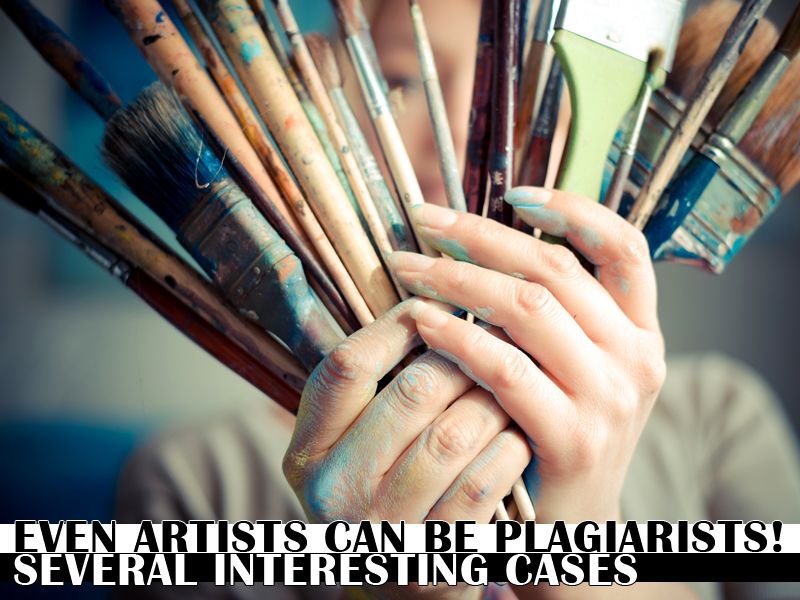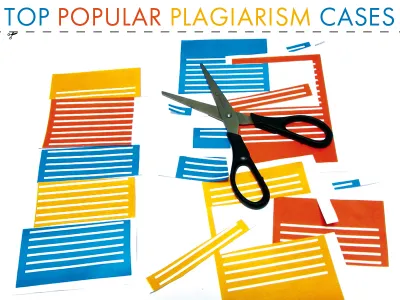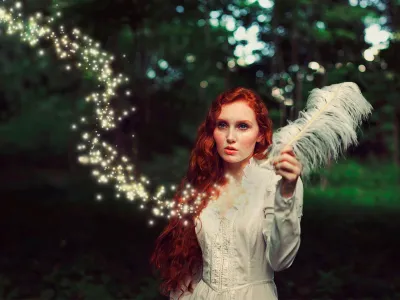
Even artists can be plagiarists! Several interesting cases
It may sound sad, but fraud and plagiarism are no longer excluded from the artistic world. Those crimes used to belong to the domain of literature and hand-made things; however, copying in art and so called ‘visual plagiarism’ have become a reality notwithstanding the professional, legal, and ethical consequences for the artists who can borrow ideas or steal images. Unfortunately, the world of art is as much affected by ambitions of indecent people as the world of enterprise and business is infected with greed.
Art plagiarism implies the ideas of stealing and deceit. Claiming stolen ideas as original ones, an artist takes the credit for the actual creator’s work and enjoys the benefits undeservingly. Being eager to obtain fame, recognition, and money, they do not care about genuine aesthetic value of the artistic works; instead, they do care about the profits and possible earnings. There are a number of artist facts that continue to amaze the audience through the years due to their mastery; however, all they represent is a perfect skill of copying.
Han van Meergeren (1889 – 1947): Creativity and Forgery
The Dutch artist, Han van Meergeren, is famous for faking the painting Christ and the Disciples at Emmaeus by Johannes Vermeer (1632 – 1675) and approximately six other paintings of this artist. Having sold the national treasure of Holland to the enemy, this notorious forger was arrested, but he kept working on his pseudo masterpieces even in jail.
Andy Warhol vs. Patricia Caulfield
Andy Warhol had several accusations of art plagiarism. One of the most famous cases is plagiarizing the works of Patricia Caulfield, photographer. Having seen the photo of flowers prepared for a photography magazine, Warhol made a reproduction of it without asking for permission. The issue was settled in court, and as a result, Warhol paid a royalty to the photographer to use the images.
Sturtevant: Double Trouble
The Museum of Modern Art in New York once hosted a new exhibition of excellent copies of well-known works of art. So, there is an important question: is it still art? If it is, then there is another question: is originality worth struggling for? There are numerous artist facts that show copying by counterfeiters. The facts are concealed, and the border between a copy and an original, as well as between a masterpiece and a plagiarized repetition of the idea is becoming even vaguer.
The exhibition entitled Double Trouble prepared by Sturtevant presents internationally famous artists who used the techniques and ideas of their colleagues. The show asks philosophical questions that have no definite answer. The visitors think about the concept of fraud, beauty, art, originality, money, stealing, genius, luck, and crime.
Art in Question
An installation at Centennial Park in Toronto was devoted to the contribution of the Pan American games. However, there is great resemblance between this installation and the work of Sanborn made in 1993. Both of them represent a cylindrical structure with characters around, emanating light with projected letters. The works differ only in the content of the text and characters that are projected. Toronto installation contains the names of sports, while Sanborn used cryptic signs in a special code. Legal action is doubtful in that case, but it is natural that Sanborn’s feelings have been hurt. There are other numerous art plagiarism facts, which are less known or talked about, but they still evidence that all ideas are circulating in the world and are easily copied by others.
Fraud in Outstanding Artists
It is possible to find some origin in every work, although some influences are just too evident not to be mentioned. A part of an Italian print made in the Renaissance times was copied by Manet in one of his famous works. Pablo Picasso referred to African sculpture in his famous works of 1990s. He is known for his phrase that “good artists copy; great artists steal.” The idea that no work of art comes from nothing brings a lot of ambiguous ideas and thoughts.
Art plagiarism is becoming more and more widespread nowadays as any information can be disseminated easily via the Internet and social media. However, not only the access to information gets easier; the facts of theft can be also revealed much faster these days. The artists now become aware of plagiarism, which enables them to voice their protest immediately. There should be new rules for the game played in the field of art now.






